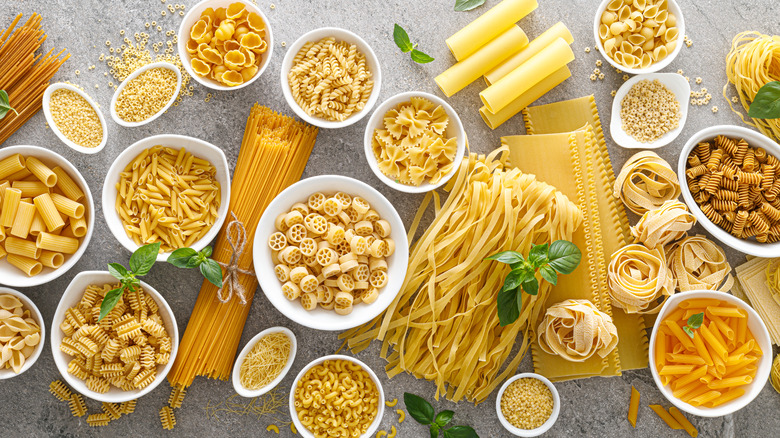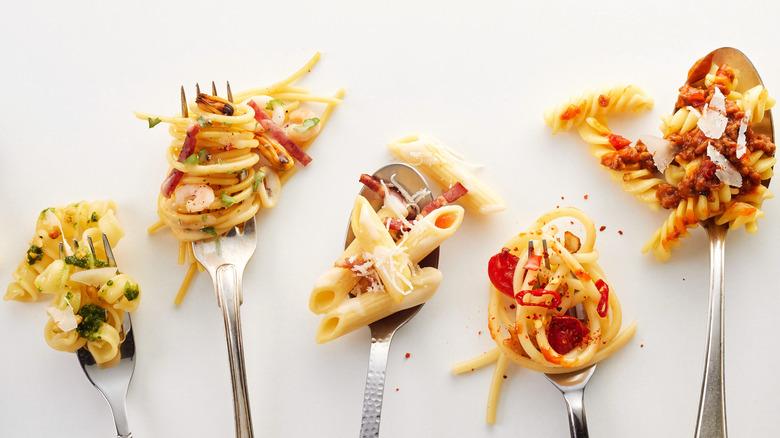How The Shape Of Pasta Affects Its Weight Once Cooked
Making the right amount of pasta for the number of people you want to feed often feels like a mathematical problem from a high school textbook. You've got six guests coming for dinner and two boxes of dried pasta. What's the right amount to cook for dinner?
You don't need to make a guess by tossing handfuls of noodles into a pot of bowling water. Instead, the answer lies in the shape of the pasta. During the cooking process, pasta absorbs some of the water from the pot, increasing its weight and size. Simply put, a piece of pasta with a larger surface area, like farfalle, will absorb more water than a piece with a smaller surface area, like elbow macaroni, according to BuzzFeed.
With so many pasta shapes and sizes, it can be a bit challenging to figure out what to expect for water absorption. Italian pasta brand, Barilla, breaks it down by shape and even by ingredients, such as veggie or gluten-free pasta. Definitely providing a lot of bang for your pasta buck is campanelle. When 2 ounces (¾ cup) of this bell-shaped pasta is cooked, 1 ½ cups is produced. In comparison, ½ cup of mini penne only produces ¾ cup after it has been cooked.
Deciding how much pasta to make
We've all had those cooking experiences where we pour the cooked pasta into a colander only to discover that we have made about two times as much as we need for the amount of sauce we prepared. Inevitably, the soggy penne ends up in the trash bin and we feel guilty.
Taste of Home shares the guidance that a single serving of pasta is generally about two ounces of dry pasta, which typically creates about a cup of cooked pasta. When making the pasta, bring a quart of water to a rolling boil for every 4 ounces of dry pasta to be cooked, per Betty Crocker. The size of the pasta is one factor in how much it will expand when boiled in water, but so does how long it is cooked. Pasta that is cooked to al dente will have less time to absorb water from the pot than pasta cooked to a softer texture, cites Weigh School.
Next time you are making your family-favorite Bolognese, don't fret about making a mathematical error. Simply remember that your dried rigatoni will increase in size while cooking and plan accordingly.

